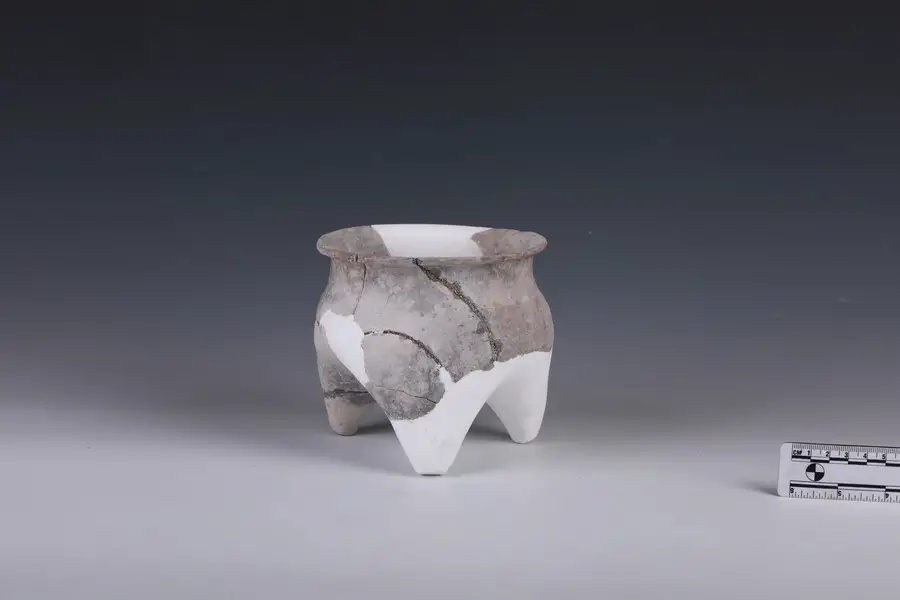Unlocking China’s Past: Unearthing a 3,000-Year-Old Archaeological Marvel
In the heart of China’s Zhejiang province, nestled in the Pishan area of Huzhou City, archaeologists have unearthed a fascinating archaeological complex that opens a window into the late period of the Shang dynasty. Dating back approximately 3,000 years, this discovery paints a vivid picture of an ancient settlement, offering insights into the culture, rituals, and regional influences of the time.
II. The Shang Dynasty and Its Legacy
The Shang dynasty, spanning from 1600 BC to 1046 BC, holds a significant place in China’s rich historical tapestry. Known for its advancements in art, technology, and governance, the Shang dynasty laid the groundwork for future dynasties. Unraveling the mysteries of this period provides a deeper understanding of China’s cultural evolution and societal dynamics.
III. The Archaeological Marvel Unveiled
The archaeological complex discovered in the Pishan area covers an expansive area of approximately 330,000 square meters. Surrounded by a circular ditch, the site houses a myriad of structures that offer a glimpse into the daily lives, rituals, and political activities of the ancient inhabitants. Among the artifacts uncovered are bronzes, ceramics, and primitive-style porcelain, each telling a unique story of craftsmanship and cultural expression.
IV. Rituals and Cultural Significance
One of the noteworthy aspects of this discovery is the presence of a dedicated area spanning approximately 3,400 square meters for rituals. Rituals held immense cultural significance during the Shang dynasty, reflecting the spiritual and ceremonial practices embedded in everyday life. The artifacts found in this ritualistic space provide a direct link to the beliefs and customs of the ancient inhabitants, offering a nuanced understanding of their worldview.
V. Luo Rupeng’s Insights
Luo Rupeng, a key figure from the Zhejiang Institute of Antiquities and Archaeology, emphasized the invaluable nature of this discovery. According to Rupeng, the findings shed light on the influence of Shang culture in the regions south of the Yangtze River. This not only expands our knowledge of the geographical reach of the Shang civilization but also underscores the interconnectedness of ancient cultures in shaping regional identities.
VI. Diverse Regional Cultures Along the Yangtze River Basin
The unearthed structures in the Pishan site hint at the diversity of regional cultures that flourished along the Yangtze River Basin. As ancient populations experienced rapid growth, unique cultural expressions emerged, creating a mosaic of traditions and practices. The archaeological evidence suggests that the Pishan site might have served as a focal point for political activities in the Dongtiaoxi River region, potentially extending its influence to broader areas, including the Lake Tai basin.
VII. Future Research and Insights
While this discovery provides a tantalizing glimpse into China’s ancient past, further research is essential to deepen our understanding of the Pishan site’s historical context. Archaeologists and historians will continue to unravel the layers of history embedded in the structures and artifacts, piecing together a more comprehensive narrative of life during the late Shang dynasty.
VIII. Conclusion: Unveiling China’s Cultural Tapestry
The archaeological complex in the Pishan area stands as a testament to the resilience and creativity of ancient civilizations. As each artifact is carefully unearthed, and every structure is examined, we inch closer to unraveling the intricacies of China’s cultural tapestry. The legacy of the Shang dynasty, woven into the fabric of this discovery, invites us to contemplate the richness of China’s past and the continuous dialogue between history and the present.
Thank You!
Post Links:
Remarkable Discovery in Brazil: 9,000-Year-Old Skeletons and a Trove of Artifacts

